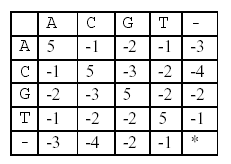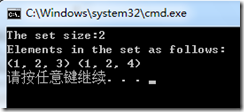HDU 1690 Bus System
题目:
Bus System
Time Limit: 2000/1000 MS (Java/Others) Memory Limit: 32768/32768 K (Java/Others)
Total Submission(s): 4292 Accepted Submission(s): 1088
Problem Description
Because of the huge population of China, public transportation is very important. Bus is an important transportation method in traditional public transportation system. And it’s still playing an important role even now.
The bus system of City X is quite strange. Unlike other city’s system, the cost of ticket is calculated based on the distance between the two stations. Here is a list which describes the relationship between the distance and the cost.

Your neighbor is a person who is a really miser. He asked you to help him to calculate the minimum cost between the two stations he listed. Can you solve this problem for him?
To simplify this problem, you can assume that all the stations are located on a straight line. We use x-coordinates to describe the stations’ positions.
Input
The input consists of several test cases. There is a single number above all, the number of cases. There are no more than 20 cases.
Each case contains eight integers on the first line, which are L1, L2, L3, L4, C1, C2, C3, C4, each number is non-negative and not larger than 1,000,000,000. You can also assume that L1<=L2<=L3<=L4.
Two integers, n and m, are given next, representing the number of the stations and questions. Each of the next n lines contains one integer, representing the x-coordinate of the ith station. Each of the next m lines contains two integers, representing the start point and the destination.
In all of the questions, the start point will be different from the destination.
For each case,2<=N<=100,0<=M<=500, each x-coordinate is between -1,000,000,000 and 1,000,000,000, and no two x-coordinates will have the same value.
Output
For each question, if the two stations are attainable, print the minimum cost between them. Otherwise, print “Station X and station Y are not attainable.” Use the format in the sample.
Sample Input
2
1 2 3 4 1 3 5 7
4 2
1
2
3
4
1 4
4 1
1 2 3 4 1 3 5 7
4 1
1
2
3
10
1 4
Sample Output
Case 1:
The minimum cost between station 1 and station 4 is 3.
The minimum cost between station 4 and station 1 is 3.
Case 2:
Station 1 and station 4 are not attainable.
Source
2008 “Sunline Cup” National Invitational Contest
分析与总结:
一道水题,但是却WA了7次。
1. 粗心把竟然直接把 0<dist && dist<=L1 写成了 0<dist<=L1 = =||, 导致我调了很久调不出样例。
2. 没有用64位int
3. 用了long long 之后发现不能AC,估计是杭电又奇葩了,于是输入输出全改成cin,cout, 才AC了。 然后想知道直接scanf, printf 处理long long 类型的为什么会WA, 于是进行了实验, 结果发现了HDU的惊人秘密 。。。 用 %lld输入long long的可以,但是输出要用__in64的那个%I64d才能AC ,表示给HDU跪了。 然后用__int64的, 发现用%lld输入竟然也可以AC... 【注: 以上是用HDU的C++提交的】
代码:
[cpp]
#include<iostream>
#include<cstdio>
#include<cstring>
using namespace std;
typedef long long int64;
const int64 INF = 1e18;
const int VN = 105;
int n;
int m;
int64 d[VN][VN];
int64 X[VN];
int64 L1,L2,L3,L4;
int64 C1,C2,C3,C4;
inline int64 abs(int64 x){return x<0?-x:x;}
void init(){
for(int i=1; i<=n; ++i){
d[i][i] = 0;
for(int j=i+1; j<=n; ++j)
d[i][j]=d[j][i]=INF;
}
}
int64 getCost(int64 dist){
if(0<dist && dist<=L1) return C1;
if(L1<dist && dist<=L2) return C2;
if(L2<dist && dist<=L3) return C3;
if(L3<dist && dist<=L4) return C4;
return INF;
}
void Floyd(){
for(int k=1; k<=n; ++k)
for(int i=1; i<=n; ++i)if(d[i][k]!=INF)
for(int j=1; j<=n; ++j)if(d[k][j]!=INF)
d[i][j]=min(d[i][j], d[i][k]+d[k][j]);
}
int main(){
int T,cas=1;
scanf("%d",&T);
while(T--){
cin >> L1 >> L2 >> L3 >> L4;
cin >> C1 >> C2 >> C3 >> C4;
scanf("%d%d",&n,&m);
for(int i=1; i<=n; ++i)
cin >> X[i];
init();
for(int i=1; i<=n; ++i){
for(int j=i+1; j<=n; ++j){
d[i][j]=d[j][i]=getCost(abs(X[i]-X[j]));
}
}
Floyd();
int u,v;
printf("Case %d:\n",cas++);
for(int i=0; i<m; ++i){
scanf("%d%d",&u,&v);
if(d[u][v]!=INF){
printf("The minimum cost between station %d and station %d is ",u,v);
cout << d[u][v] << ".\n";
}
else
printf("Station %d and station %d are not attainable.\n",u,v);
}
}
return 0;
}
补充:软件开发 , C++ ,




